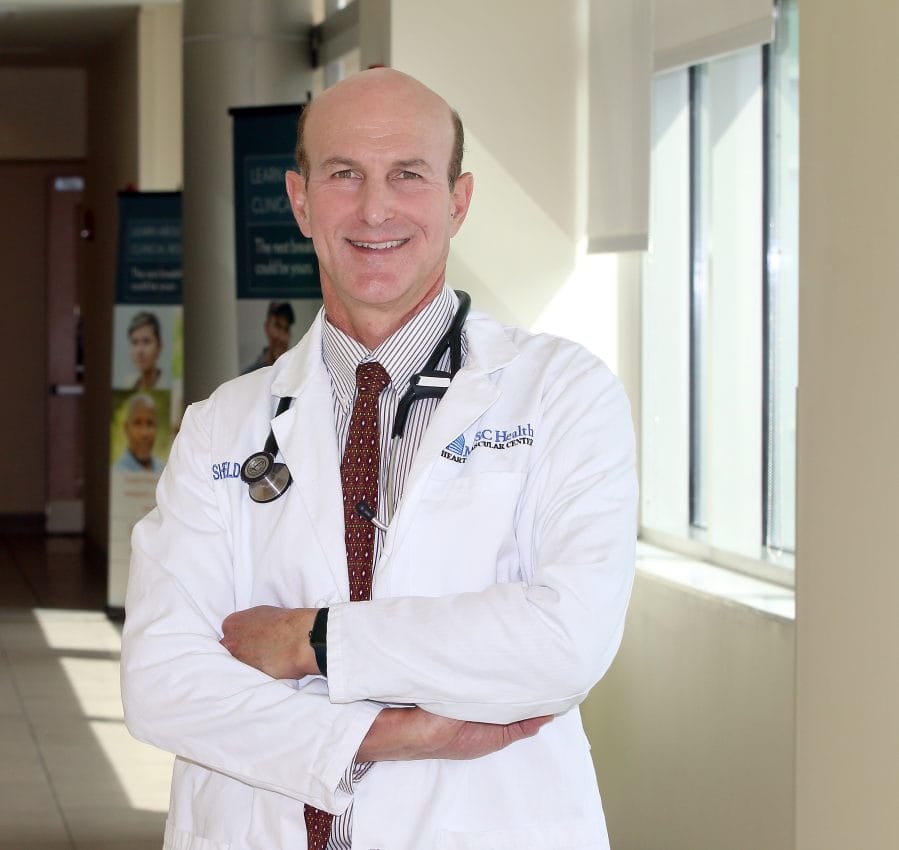Cardiology has made great strides in saving lives in the past few decades – survival rates for coronary heart disease and acute heart attacks have increased sharply over the years – but there’s one area where we’ve actually lost ground.
Heart failure
At least six million people in the United States have some form of heart failure. And that figure continues to rise, driven primarily by aging and the obesity epidemic, which causes hypertension, diabetes, kidney disease, and other conditions that contribute to heart failure.
Heart failure is associated with high rates of hospitalization, high costs, and impaired quality of life. Despite the availability of drug therapies like SGLT-2 inhibitors and sacubitril/valsartan, we haven’t been able to reduce the mortality rate for one form in particular – heart failure with preserved ejection fraction (HFpEF).
HFpEF is a particularly difficult challenge. This hard-to-diagnose condition often results in patients who breathe normally at rest but become immediately breathless with any physical activity.
Unlike most cardiac conditions, it is more likely to occur in women – 60% of HFpEF patients are female – and while it has been considered a disease of older women, obesity is driving an increased incidence in younger patients. Some have called it a disease of inadequate exercise.
HFpEF patients have high pressure in the left ventricle and left atrium of the heart, which makes the heart unable to adequately fill during exertion. But beyond that it’s a really difficult thing to explain, so I just tell my patients to call it “Huff-puff” because that’s what it makes them do when they attempt something as simple as walking.
Typical treatments like hypertension drugs and diuretics can help in patients with high blood pressure and fluid retention, but many HFpEF patients have neither, so these medications are off the table – they can even be harmful. And we quickly run out of alternatives for these people.
Now, however, there’s a “hole” new option being tested – creating an opening in the heart wall to relieve the pressure.
Approximately 60 study sites worldwide are participating in RESPONDER-HF, a randomized clinical trial of the Corvia Atrial Shunt.
The shunt is a remarkably simple device, implanted between the two upper chambers of the heart. I liken it to an insulin pump in that it functions only when needed. The passage is always open, but it transports blood only as necessary. If the patient is sitting and the pressure is normal, there is minimal or no flow across the device. But during exertion, when the left atrial pressure exceeds that of the right, blood flows from the left atrium to the right atrium to decompress the left atrium and pulmonary circulation. The patient immediately feels less short of breath.
The objective of the RESPONDER-HF confirmatory trial is to identify and enroll HFpEF patients who can most benefit from shunting. In prior studies covering a decade or so, about 600 atrial shunts have been implanted. The data show that it’s a safe, minimally invasive procedure, and a certain HFpEF phenotype has done really well. These tend to be patients with no pacemakers and low pulmonary vascular resistance. Patients with less advanced disease who have low or normal intracardiac pressures at rest but high pressures with exercise, specifically higher left atrial pressure than right, constitute the group that may experience significant benefit. They are also the patients for whom medications are least likely to be effective.
And for these people, the shunt can deliver a dramatic improvement in their quality of life. Some have told me they feel better the first day after the implant.
Now I do understand that to most cardiologists, the idea of intentionally creating a shunt in the heart is completely counterintuitive. We’re all conditioned to believe a hole in the heart wall is a very bad thing that should be repaired, not created. But this particular opening seems to be a good thing for patients who fit the responder profile, providing an elegant mechanical fix to a problem that drugs can’t handle.
Every cardiac physician has patients who are immensely frustrated by uncertain diagnoses, loss of functionality and multiple therapies that don’t work. And for them, the study presents a compelling opportunity. Even the 50% of patients who won’t receive the shunt in the randomized trial should see improvement in their condition due to the high attention level from the investigative clinical team at each study site. Furthermore, these patients will have the opportunity to receive the shunt after their unblinding visit.
For the 50% who do have the device implanted, people who’ve been to the emergency room a dozen times, people whose treatment options are exhausted and whose prognosis is grim, it could be a life-changer.
Physicians who can present those options to their patients, along with the opportunity to give back to the world – to contribute to scientific knowledge that could help millions of heart failure patients in the future – are likely to get a very positive response.
Sheldon E. Litwin, M.D., is the Alicia Spaulding-Paolozzi Professor of Cardiology at the Medical University of South Carolina, and a lead investigator for the study. litwins@musc.edu
Physician referral/enrollment information for the RESPONDER-HF trial can be found at https://us.corviamedical.com/healthcare-professionals/reduce-lap-hf-clinical-program/responder-hf/
